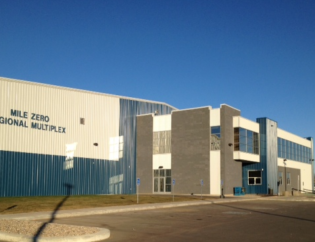
BE THE ENTREPRENEUR YOU ALWAYS DREAMED OF BEING — DOWNLOAD OUR SMART BUILDER’S GUIDE TO RESTAURANT CONSTRUCTION!
Modular Construction
An off-site construction process that uses technological innovation to construct building components (modules) in controlled plant conditions, modular buildings are most often employed in Alberta for work camps and homes, but they are actually quite versatile, creative, and good for the environment. In modular construction, self-contained units are prefabricated in a factory and delivered to site for assembly. While most people conjure up visions of temporary classrooms when they think of modular construction, this method of construction speeds up schedule – allowing restaurants to begin generating revenue quickly. Because prefabrication is done in a factory environment, there are less trades to coordinate – making kitchen construction simpler as well as quicker. In a franchise situation, if a parent company uses the same design in multiple locations, it reduces design costs as well as permitting approval requirements. Another consideration is using prefabricated, modular components alongside a traditional build which can save on time and increase quality. However, if the building is large, modular construction can end up costing more money.
Pre-engineered Steel Buildings
Like modular construction, pre-engineered steel buildings use pre-fabrication, but only the steel frame is fabricated in a facility. Pre-engineered construction fabricates certain elements (I-beams and connections) that are perfectly designed to the building specifications and then delivered to site. Once they’re delivered, they are quick and easy to erect and use less manpower and create less waste – resulting in overall cost savings. Also, because the frame is pre-fabricated, builders can design the foundations to support the precise building weight. Pre-engineered buildings don’t have joists which creates more overhead space and they are also easy to expand on. Like modular, pre-engineered steel is greener and quicker, but it tends to be cheaper than modular, create less waste, is lower maintenance, incredibly durable, has flexible frames (which is a benefit in cold, Alberta winters), is easy to expand, and is completely fireproof. In the restaurant industry, where fire causes $172 million in property loss, 75 injuries, and several deaths annually, a fireproof building is key to mitigating risk. Also like modular, the quick project turnaround also results in cost savings and the opportunity to open your restaurant sooner.
Custom Built or Conventional Construction
Custom built or conventional construction offers the most flexibility in design and sustainability, but it also means a linear schedule (which takes longer), more trades (higher labour costs), and more waste (unlike pre-fabrication, conventional construction isn’t as precise). Often, foundations offer more structure than is necessary because building weight isn’t pre-calculated, and, because joists are necessary, there is no overhead space or storage. Conventional builds also require ongoing maintenance and foundations weaken over time. For large, complex projects, custom builds are an excellent choice, but for a restaurant, you’re better off going the pre-fabricated route.
The Edmonton construction industry readily provides all three of these building methods and materials for restaurant construction – at Cormode & Dickson we are happy to work with you to select the right building material for your restaurant project and will ensure it fits into your business plan.










